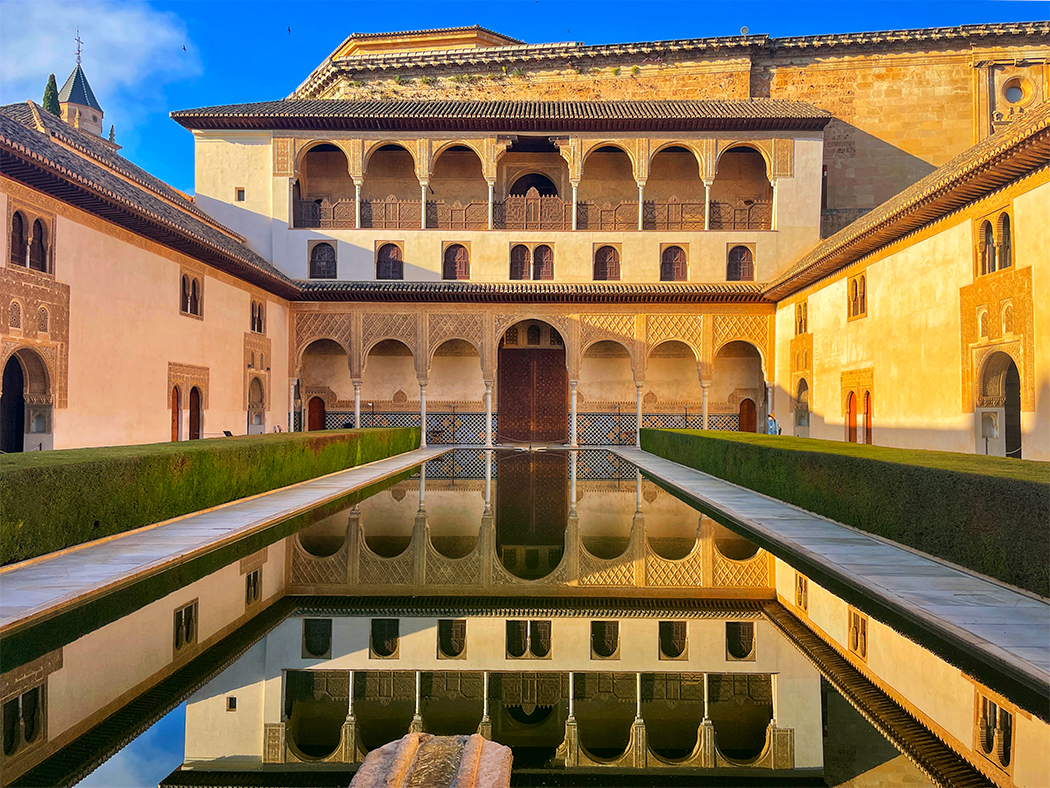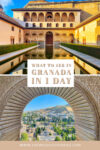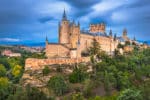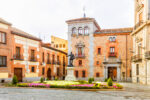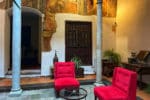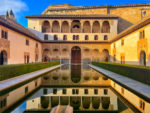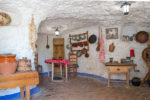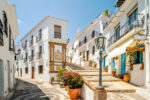Looking for things to do in Granada? Only have one day in town? Here’s how to see Moorish Granada in one day.
Shaped by three different empires, Granada has enough history and character to keep you busy exploring for a week. If you don’t have a week, a weekend in Granada is a good compromise if you want to see the city’s main sites. But if you only have one day in Granada, it’s a good idea to concentrate on Granada’s unique Al-Andalus or Moorish heritage. Unlike, say, Seville, that’s all about the Catholic grandeur, in Granada (and Cordoba), you can follow in the footsteps of the Moors.
Granada’s Moorish culture flourished after the fall of the Umayyad caliphate in Cordoba, and it had a different character. In Cordoba, the Umayyads were all about affirming their power in the land far from home.
But in Granada, the Nasrids – the last Muslim dynasty on the Iberian Peninsula, were the tribute-paying vassals of the Christian Kingdom of Castile. Their rule and heritage were focused on honouring knowledge and art rather than military power. It is no wonder that Nasrid monuments in Granada are some of the most beautiful Moorish sites in Spain. Another city with Nazrid legacy is Malaga in Costa del Sol.
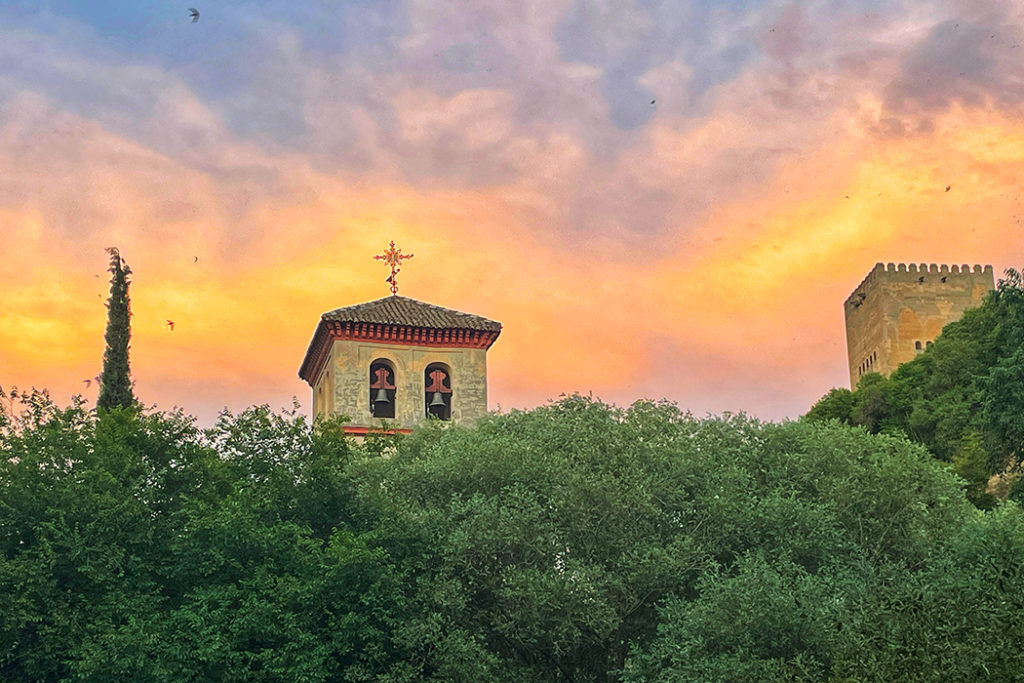
There are seven Moorish monuments in Granada: Alhambra complex, El Bañuelo, Corral del Carbon and four palaces: Casa de Zafra, Casa Horno de Oro, Casa del Chapiz, and Palacio Dar al-Horra.
With a bit of planning and a bit of walking, you can explore all the Moorish monuments in Granada in one day. Granada is also one of the best cities for solo travel in Spain so if you are travelling alone you’ll feel entirely safe walking around the city’s back alleys.
Tip: Four of these monuments can be accessed on the same ticket (5 euros) if you visit on the same day. So make sure to keep your ticket handy. Also, make sure to carry some form of ID with you. Some of these monuments (and especially Alhambra) require you to present your ID at the entrance.
How to Get to Granada
Granada is well connected by train to all major cities in Spain. From Madrid, the journey takes from 3.5 to 4.5 hours, depending on the train.
Train travel is very straightforward in Spain. But to make things even easier, I recommend installing the Omio app and booking your tickets through the app. This way, you can access your tickets in the app at any time. Or, if you are planning on taking many train trips in a short period of time, consider the benefits of getting a Eurail Pass, which comes with its own app.
Where to Stay in Granada
To maximize your sightseeing opportunities, pick a hotel in the Old Town by the Darro River. This way you’ll be located between Alhambra and two of the most atmospheric neighbourhoods – Albaicin and Sacromonte. As a perk, you’ll be walking along one of Granada’s most romantic streets – Carrera del Darro on the way to and from your hotel.
Some of the good options in this part of town are the quirky 3-star Palacio de Santa Ines located in the XVI-century palace, the luxurious Hotel Casa 1800 in the former residence of Lords of Cañaveral, Counts of Benalúa, and the budget-friendly Suites Casa Cuesta del Agua. Here is a review of 5 gorgeous hotels in Granada.
Alhambra
Start your day by visiting Alhambra. This magnificent Nasrid palace complex is probably what brought you to Granada in the first place. And Alhambra is hands down the most spectacular monument in Moorish Granada. When you book your Alhambra tickets (a few months in advance), take the earliest time slot.
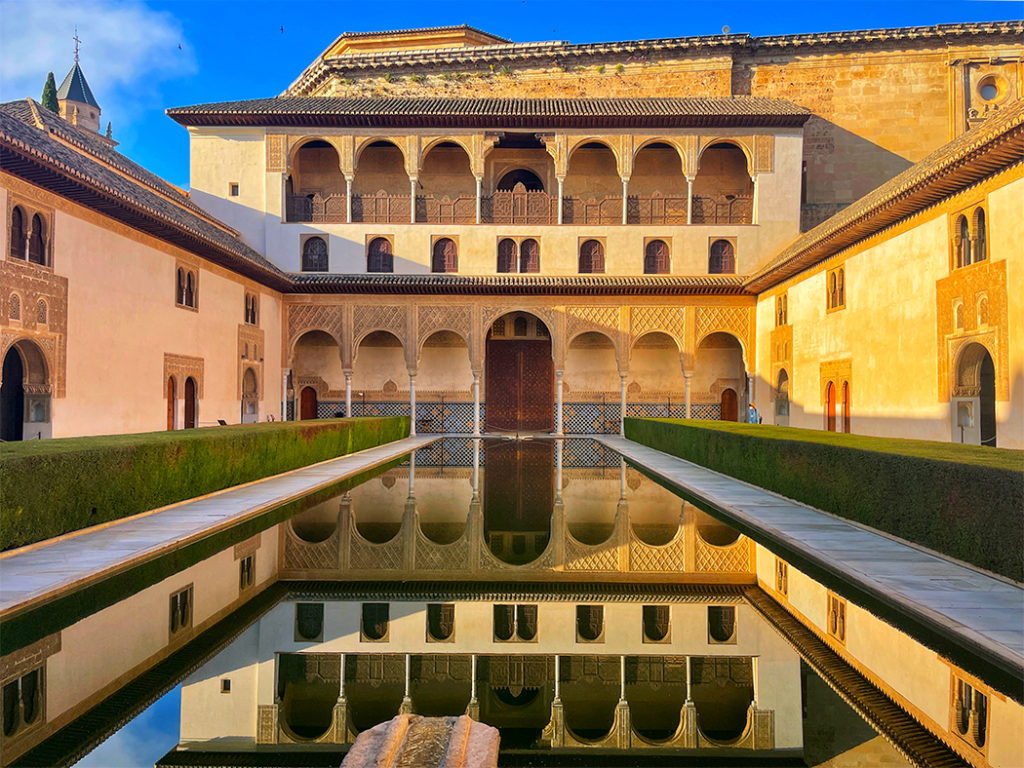
Most of the Alhambra can be visited at any time, but the Nasrid Palaces can only be entered within the half-hour window from the time printed on your ticket. This is done to regulate the number of people at the palace at any one time.
I recommend arriving at the Alhambra by 8 am, just as the main gate opens, and heading straight for Nasrid Palaces to take your place in the queue.
Yes, you will have to stand in the queue for 30 or so minutes until the entry opens, but if you are first in line, you might just have the jaw-dropping Nasrid Palaces to yourself for the first half an hour or so. I did. After that, the rest of the visitors from your time slot will catch up to you.
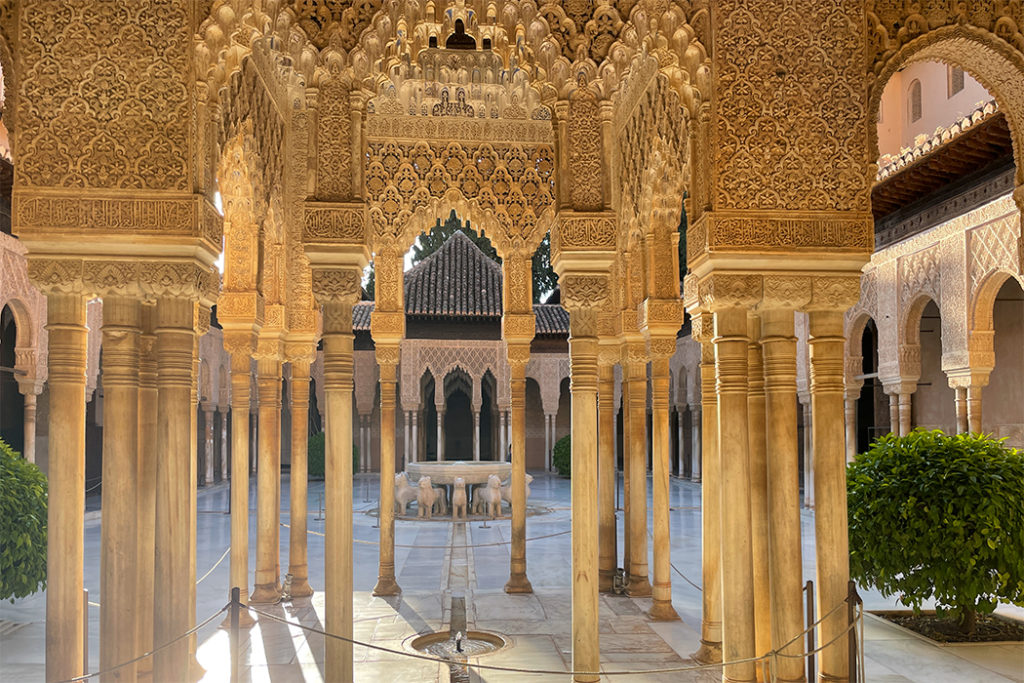
Tip: Alhambra tickets sell out very fast, and you have to book them about three months in advance. You can book the tickets via the official Alhambra website or purchase them through a third party, like GetYourGuide. Alternatively, a guided tour of Alhambra is a good option for learning the rich history of this incredible monument and sticking to a pre-determined timetable.
If you do find yourself in Granada without an Alhambra ticket, you can always try to book a night visit. It is not as spectacular as the daytime view or as the night-time experience at Cordoba Mezquita, but it gives you a chance to see the palaces at short notice.
Once you are done at Nasrid Palaces, head for Generalife Gardens before they get too crowded with tour groups and then return to visit Alcazar for the sweeping views of Granada from its towers and Carl V Palace for its fine art museum. Expect to spend 3-3.5 hours exploring Alhambra.
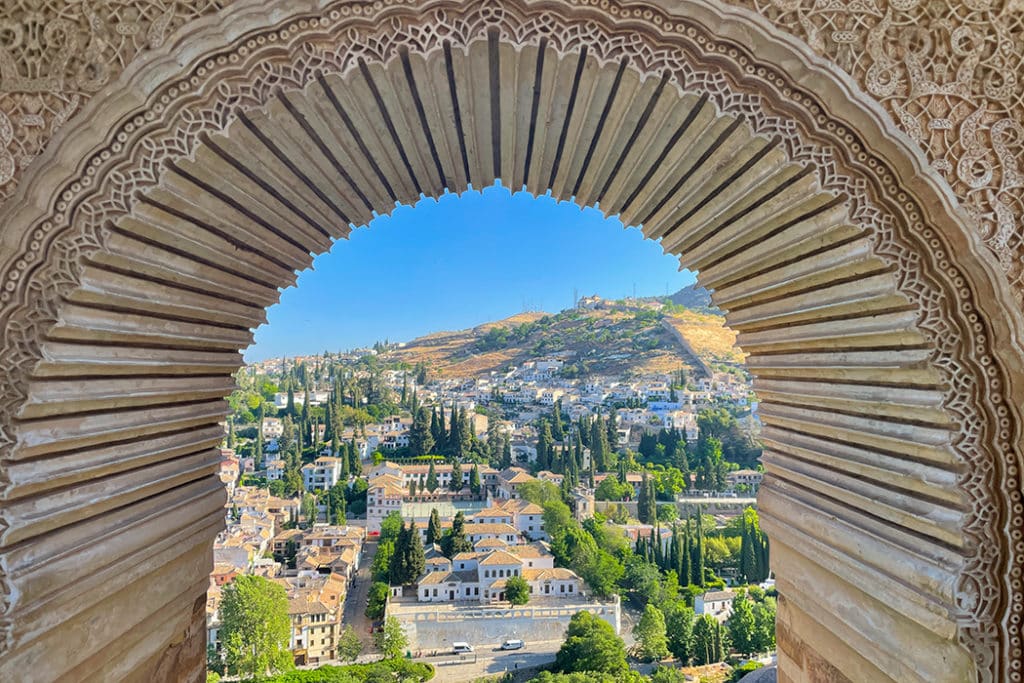
Once you are finished at the Alhambra, catch the local minibus 32 from the Alhambra to Carrera del Darro. The tickets (1.40 euros) are purchased on the bus, so it’s a super easy alternative to walking back.
Detour: If you think you have some spare time, you might like to visit Granada Cathedral before returning to the Old Town. There is also an Andalusi monument across the road – Corral del Carbon, which used to be a warehouse, then a coal storage facility, and then an open-air theatre.
Carrera del Darro
You’ll probably be famished by the time you return to Carrera del Darro, so pick from dozens of bars, restaurants, and cafes along this street and have a nice long relaxing lunch. And after lunch, start exploring Carrera del Darro.
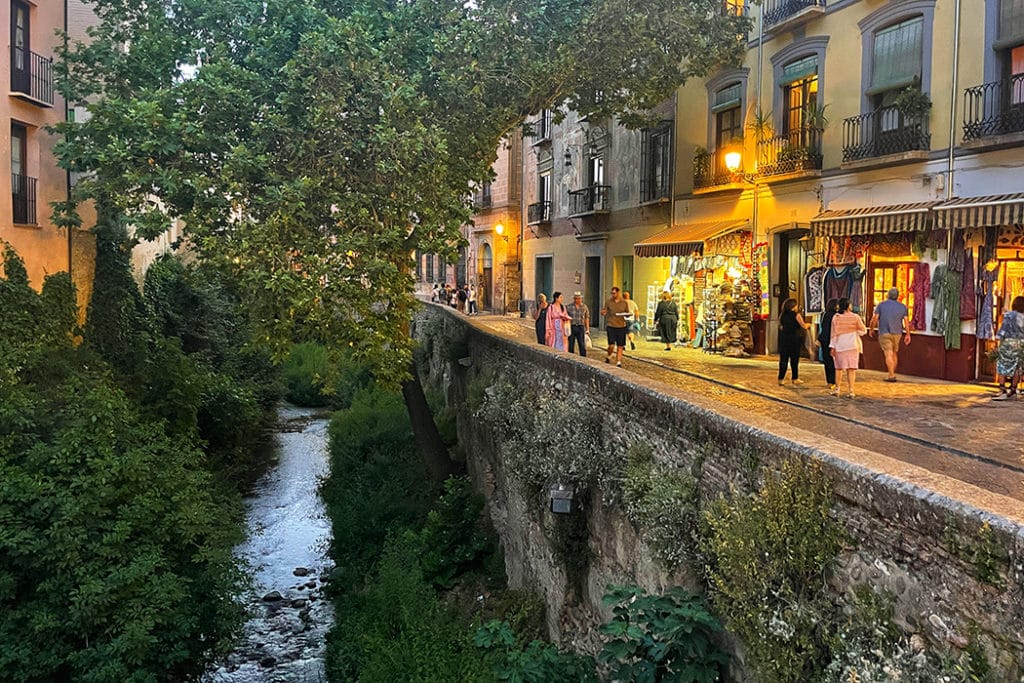
This cobblestone street along the River Darro is very atmospheric, and it hides two of Granada’s Moorish monuments: El Bañuelo and Casa de Zafra, as well as the Archaeological museum with relics from Andalusi culture.
El Bañuelo
El Bañuelo (Carrera del Darro 31) – is an ancient Hammam from the 11th century. At first glance, it may look like not much of the Hamman remains, yet El Bañuelo is one of the best-preserved public Arab baths on the Iberian Peninsula.
In the days of Moorish Granada, the Hammam was located on a prominent public road near one of the gates in the medieval city wall that surrounded this residential neighbourhood.
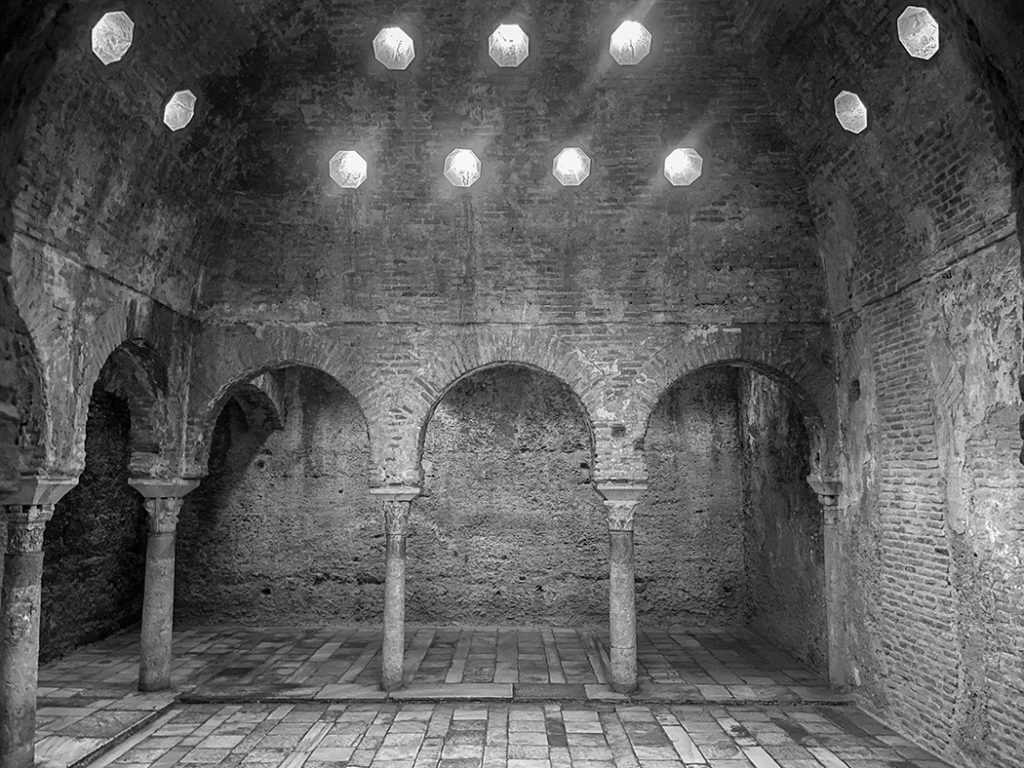
The Hammam consisted of three rooms: hot, cold, and warm rooms. To maintain privacy, the Hammam had no windows, and the only source of light was the star-shaped openings in the arched ceiling. Don’t miss the capstones of the columns that support the arches – much of the stone carving has been preserved.
Remember to keep your ticket – it will get you to two other monuments: Casa Horno de Oro and Palacio Dar al-Horra.
Casa de Zafra
Casa de Zafra (Calle Portería Concepción) is a history museum set inside a 14th-century Moorish house. In typical Nasrid style, Casa de Zafra is built around the central courtyard with a rectangular pool in the centre.
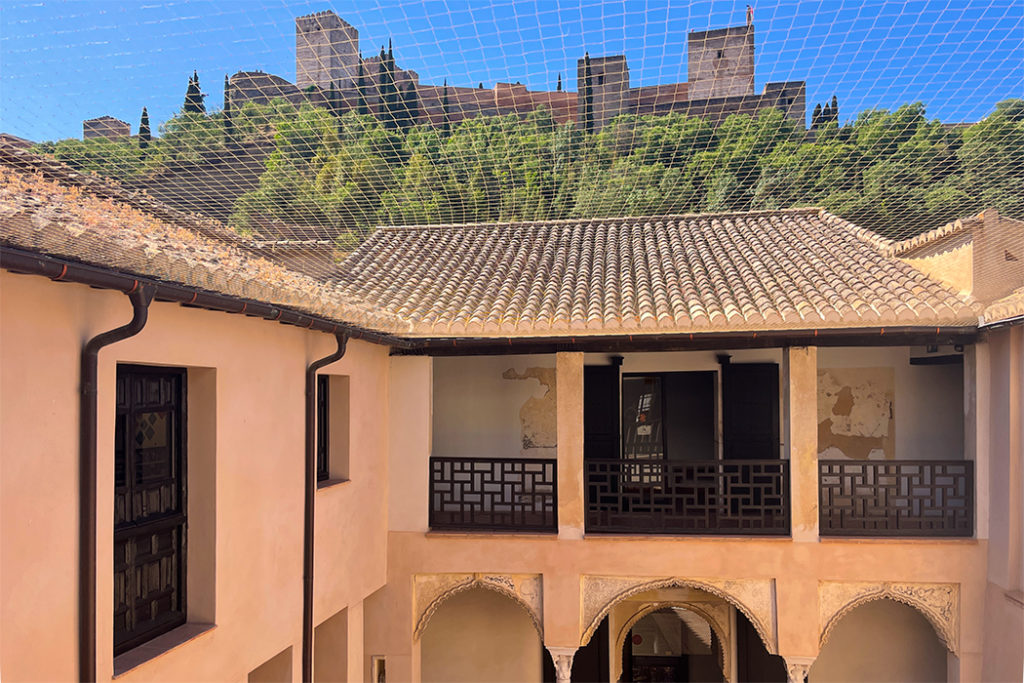
The decorated arches that line the courtyard open to a series of rooms. Along the north and south halls are the bedrooms, and the smaller bays house a kitchen, stables, pantry and latrine.
The museum display at Casa de Zafra takes you through 2,600 years of Granada’s history, from the Iberian settlement to the Moorish stronghold to the Catholic city and to the modern-day UNESCO heritage site.
Detour: The archaeological museum (Carrera del Darro 41) is not an Andalusi monument, but it’s free, and it has a fascinating collection of artifacts starting from the pre-historic period of the Iberian peninsula to the Iberian, Roman and Arab cultures.
Located in the stunningly preserved 16th-century mansion Casa de Castril, it has seven galleries sprawled over two floors exhibiting Roman statues and mosaics, Iberian artifacts, and Nasrid coins, pottery and weapons.
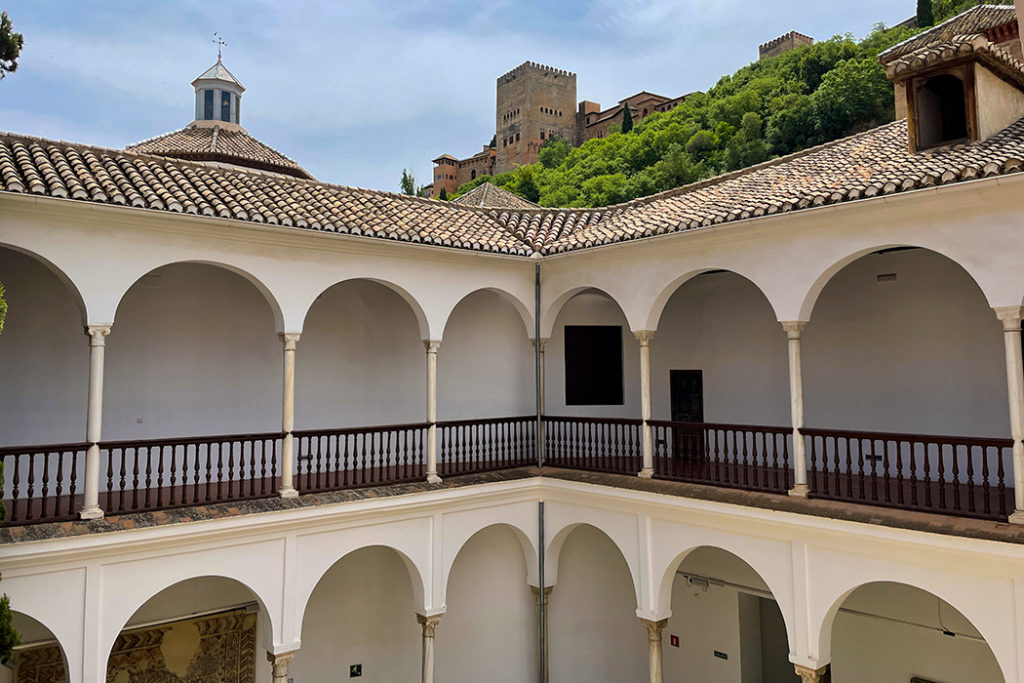
Detour 2: If you have a strong stomach, check out the permanent Inquisition Exhibition at Palacio de los Olvidados. I felt queasy after visiting it, but I found it to be one of those stomach-churning sights that you can’t not look at. Wooden claws for stripping the flesh off the bones, saws for cutting people in half, racks and torture wheels, spikes to impale people on… it’s unthinkable.
The top floor of the palace has a lovely mirador (lookout) over the rooftops of the Old Town and Alhambra on top of the hill.
Casa Horno de Oro
To continue your explorations of Moorish Granada, head to Sacromonte – the old gypsy neighbourhood lying on the side of Sacromonte hill to the east of the Moorish Albaicin. The easiest way to get to Sacromonte is to walk to the end of Carrera del Darro, which becomes Paseo de los Tristes, before turning right and becoming Cuesta del Chapiz.
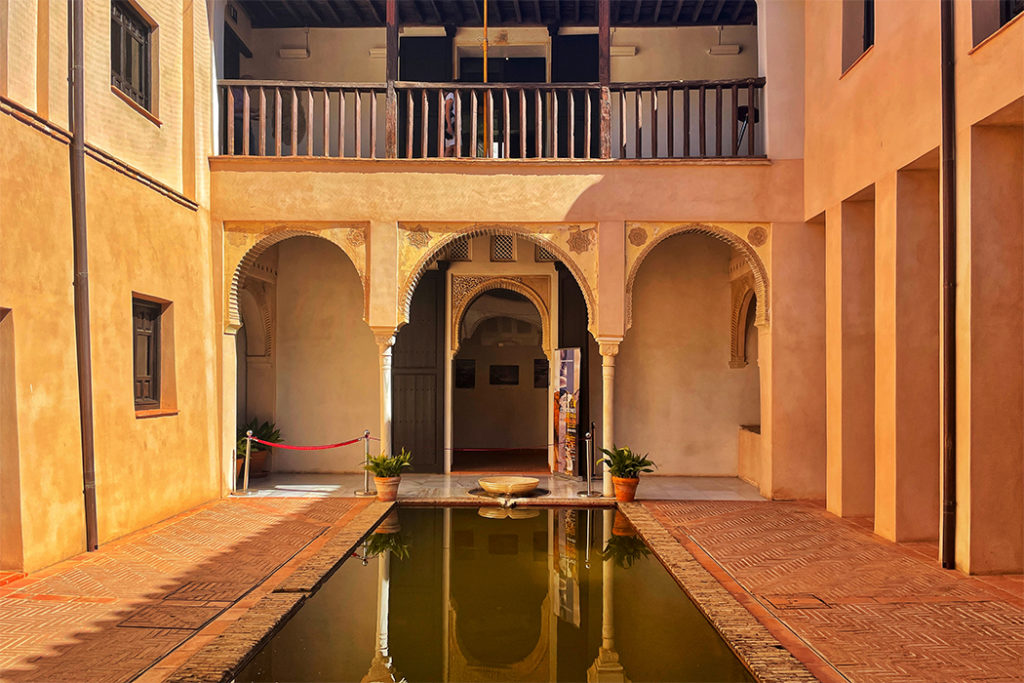
Casa Horno de Oro (Paseo de los Tristes, 14) is an Andalusi monument hidden along Paseo de los Tristes. Built in the 15th century, the house is constructed around a rectangular patio with a pool in the middle, like all Andalusi houses. The two porticoes that run along the pool are supported by Nazrid columns, which open onto the rooms of the house. Like in all Moorish houses, all doors and windows face the central patio – the social centre of the house.
The original Nasrid house was quite small and had only one floor. The second floor was added later, in the 16th century. The courtyard is the most atmospheric area of the house, with gorgeous Moorish arches supporting the second-floor veranda.
Before you leave, check out the house’s main entrance – a Moorish doorway with a brick arch located a few meters away from the modern-day entrance.
Casa del Chapiz
From Casa Horno de Oro, continue walking along Paseo de los Tristes and then turn right where the road becomes Cuesta del Chapiz and start the ascent up the Sacromonte hill.
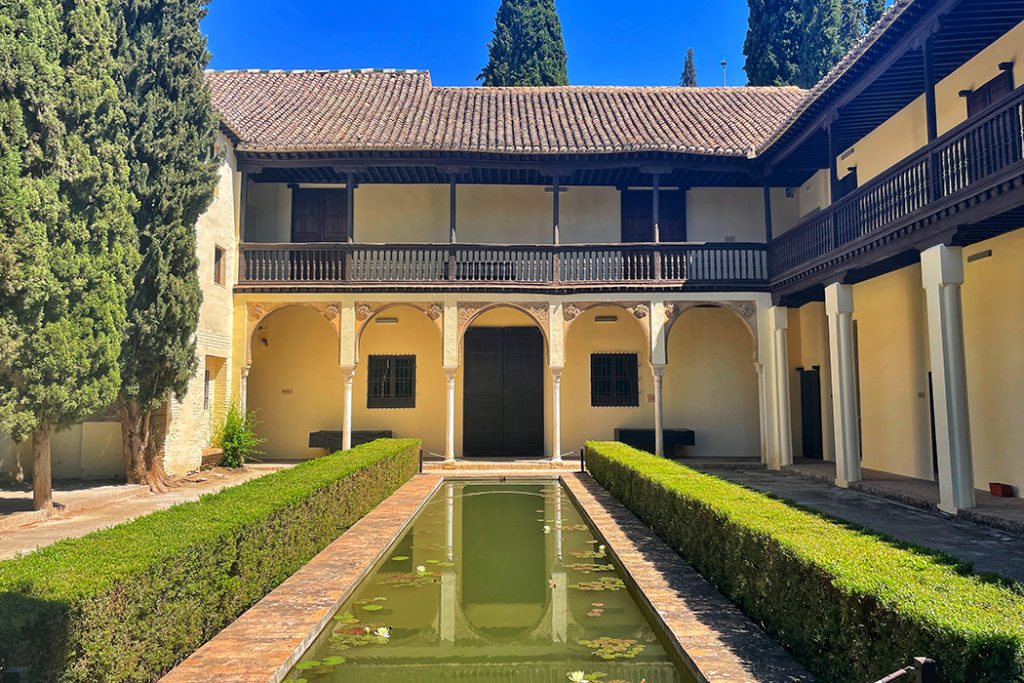
Casas del Chapiz (Camino del Sacromonte, 1) is the next Andalusi monument conveniently located along the way, on the corner of Cuesta del Chapiz and Camino del Sacromonte. Casas del Chapiz are actually two houses with two patios and lovely gardens.
Most of the rooms in the houses are taken up by the School of Arabic Studies and remain closed to the public, but the patios are interesting to see with their typical Arabic layout, and the gardens have fantastic views of Alhambra towering over the ancient roof tiles of the Old Town houses.
Sacromonte Caves
Sacromonte Caves Museum (Barranco de los negros) is of the most unusual things to do in Granada in one day (or in any number of days). This complex of caves dug into the side of the hill is one of Granada’s best-kept secrets and one of the city’s most extraordinary sites.
It preserves the haunting history of people discarded by society and living in neglect, fear, pain and isolation. It is your opportunity to see how the other half lived in Moorish Granada.
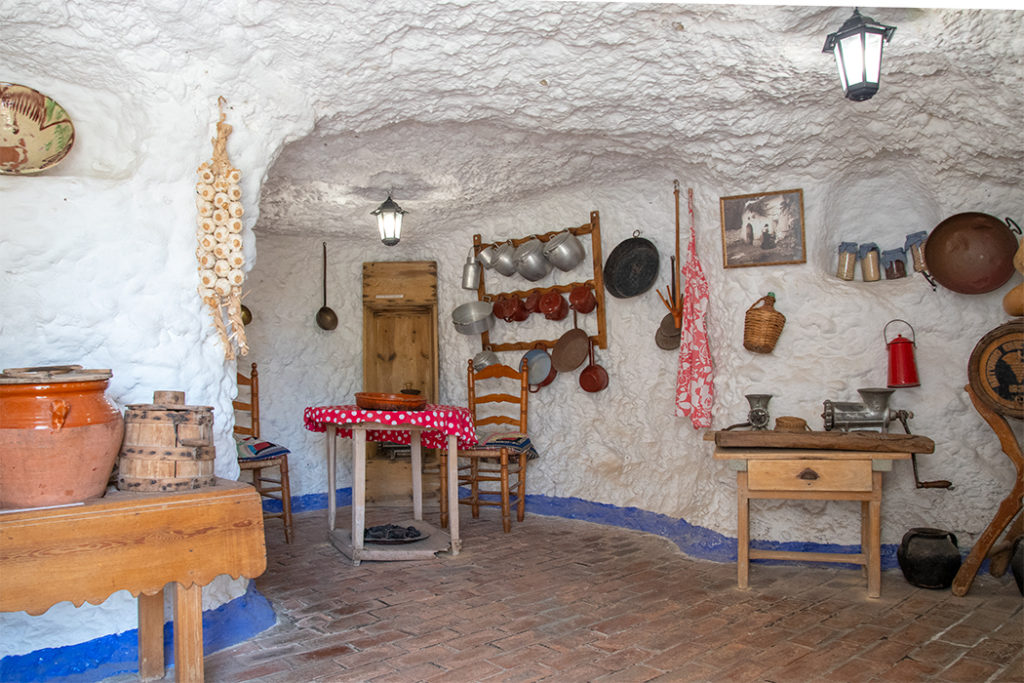
To get to the museum from Casas del Chapiz, turn onto Camino del Sacromonte and walk until you see the signs pointing towards the museum. Or, if you don’t feel like a steep walk along cobbled streets, take the minibus 34. It stops right outside Casa Horno de Oro, runs quite frequently and costs only 1.40 euros.
The museum features a total of 11 caves or gypsy houses, extensive information displays and a couple of ‘movie caves’ where a projector plays documentary footage of what life was like for the inhabitants of the caves, who were mostly Spanish Gypsies.
Although, in truth, it was a much more multicultural community consisting of black slaves abandoned by their Arab masters when they fled Granada after the Christian monarchs expelled the Nasrids in 1492, as well as moriscos – the converted Muslims of lower socioeconomic status.
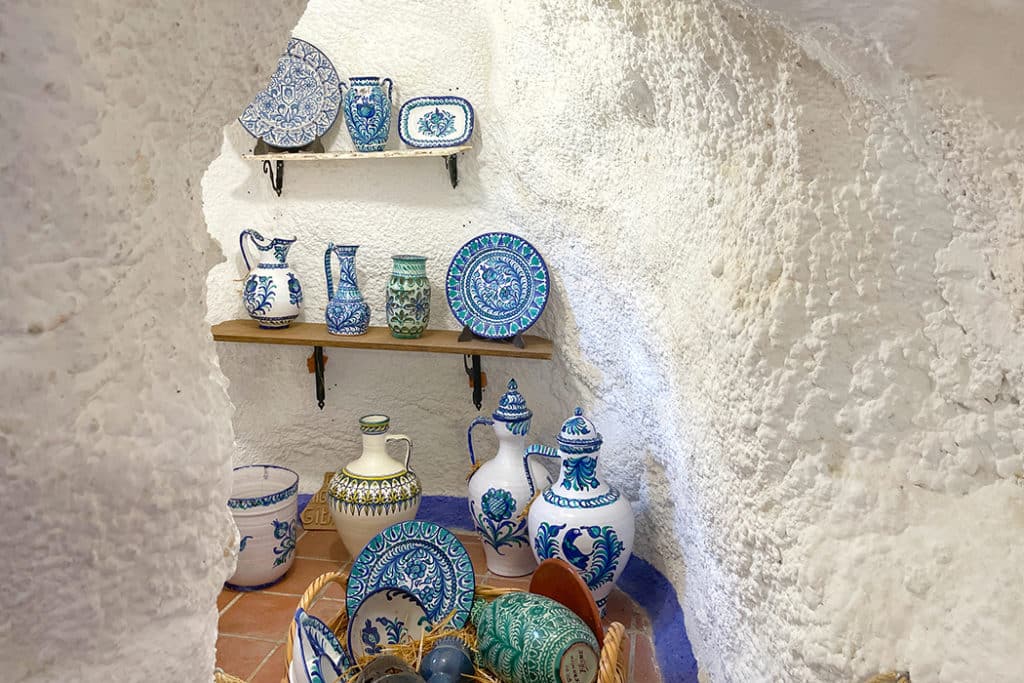
Even the name Sacromonte (Sacred Mountain) has a Moorish origin. The ‘holy’ history of Sacromonte began when an ancient book written in strange characters on leaden plates was discovered here.
Originally believed to have been written by a disciple of Saint Cecilio – the patron saint of Granada, it was actually written by a Moorish scholar who used language and symbols that underscored the similarities between the Islamic and Christian religions. His intention was to inspire ideological and political integration of the Moors under Christian law. For more details and images, check my guide to visiting Sacromonte Caves.
Streets of Albaicin
Sprawling up the hillside to the west of Sacromonte, Albaicin is Granada’s medieval Moorish quarter of Granada. It is a quaint tangle of winding streets and traditional houses that was given the status of a UNESCO site when the Alhambra was added to the register. It’s a traditional Andalusian old town, like Alicante, Cordoba or Sevilla.
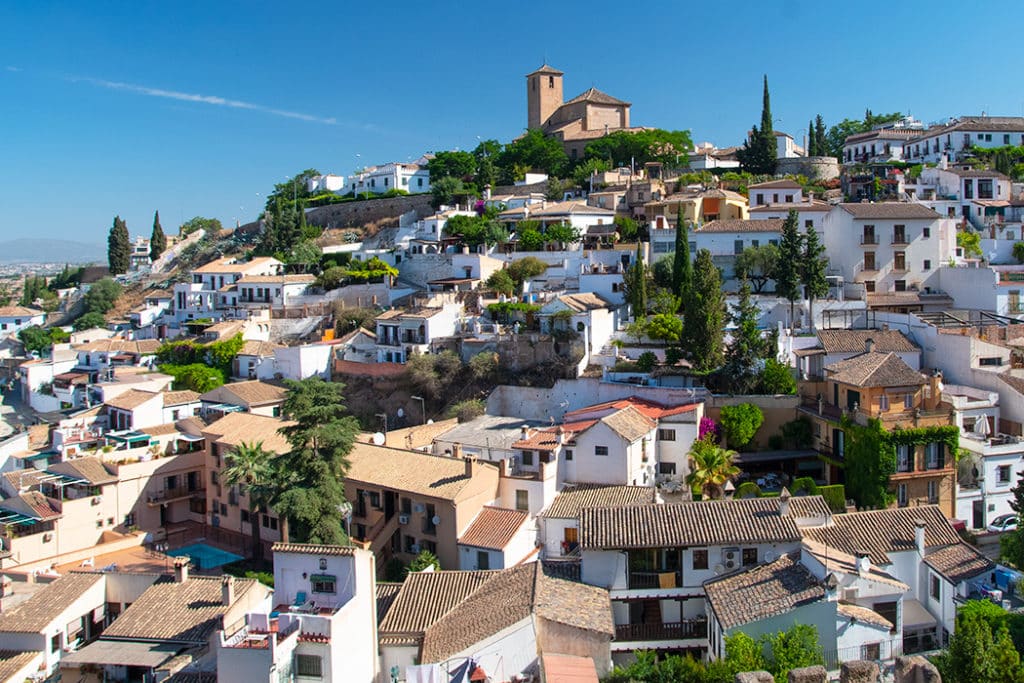
The best way to explore Albaicin is to let yourself get lost in its maze of narrow cobbled streets. Each time you turn a corner, you get a different view of Alhambra, but don’t get too excited yet; the best views are waiting for you at the end of the walk.
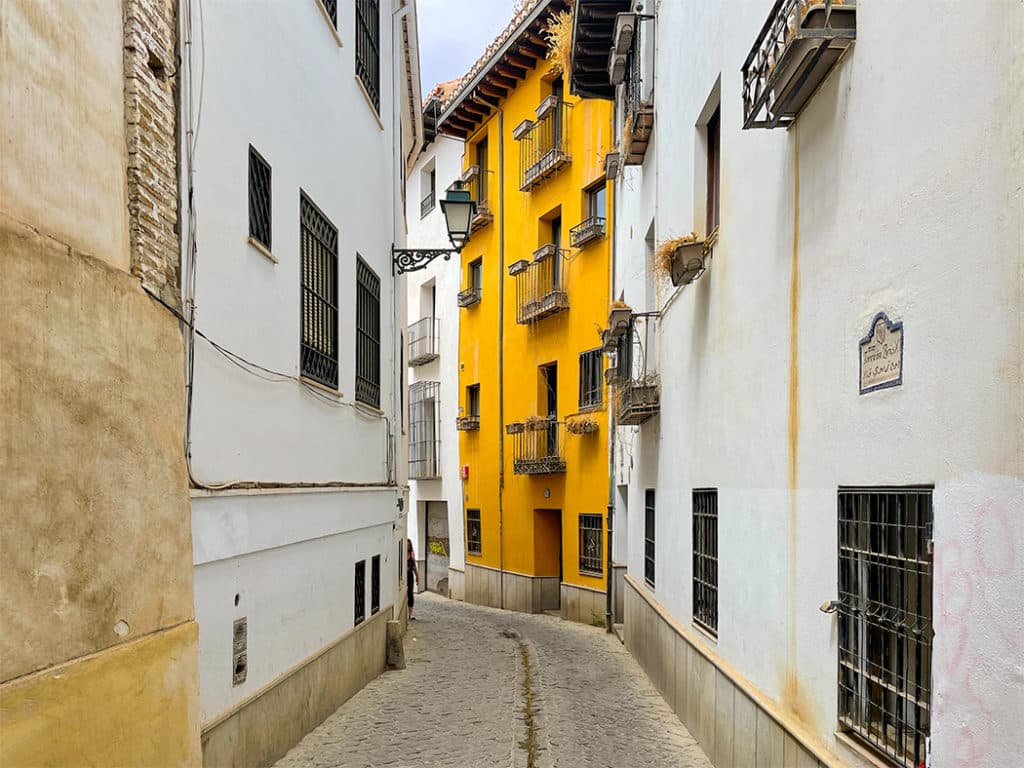
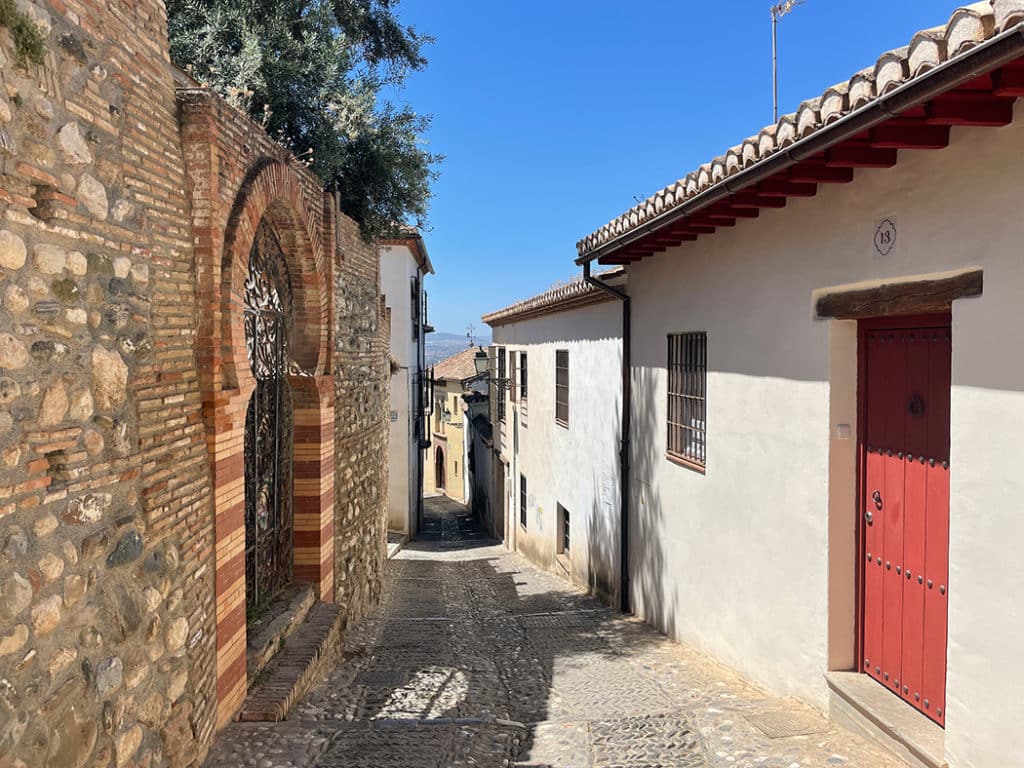
Here are a few specific places you might like to check out in Albaicin on your one day in Granada.
Arab bazaar sprawls along the web of streets around Cuesta Calfereria Nueva. It is very similar to the markets in Alcaiceria, so if you feel that you are missing out on some traditional shopping in Granada, here is your chance. You’ll find all sorts of trinkets and inexpensive clothes like harem pants and wrap-around skirts sold here, mostly by Moroccan sellers. There are also shops that sell Arabic sweets and a nice tea house – Teteria Divan.

Cafe 4 Gatos (Placeta Cruz Verde, 6) is the go-to place if you feel like a snack or a cold drink to have a break from walking. It’s located on a particularly picturesque street corner and has partial views of the Alhambra.
I expected to see at least a couple of cats, given the cafe’s name, but it turns out that the phrase ‘4 cats’ (quatro gatos) means ‘a very small place’ in Spanish!
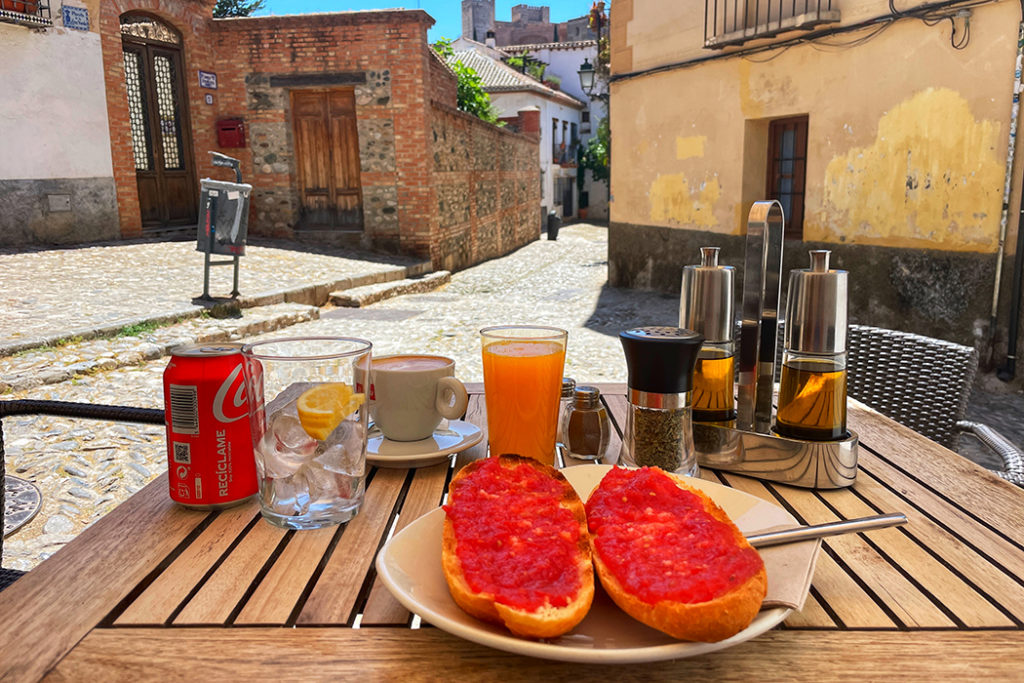
Palacio Dar al-Hora
Palacio Dar al-Horra (Callejón de las Monjas Albayzin) is the prettiest monument of Moorish Granada (after the Alhambra, of course). In fact, it looks like a mini Alhambra. It’s not really that surprising considering that this palace was the official residence of Aixa la-Horra, mother of the last Emir of Granada, Boabdil.
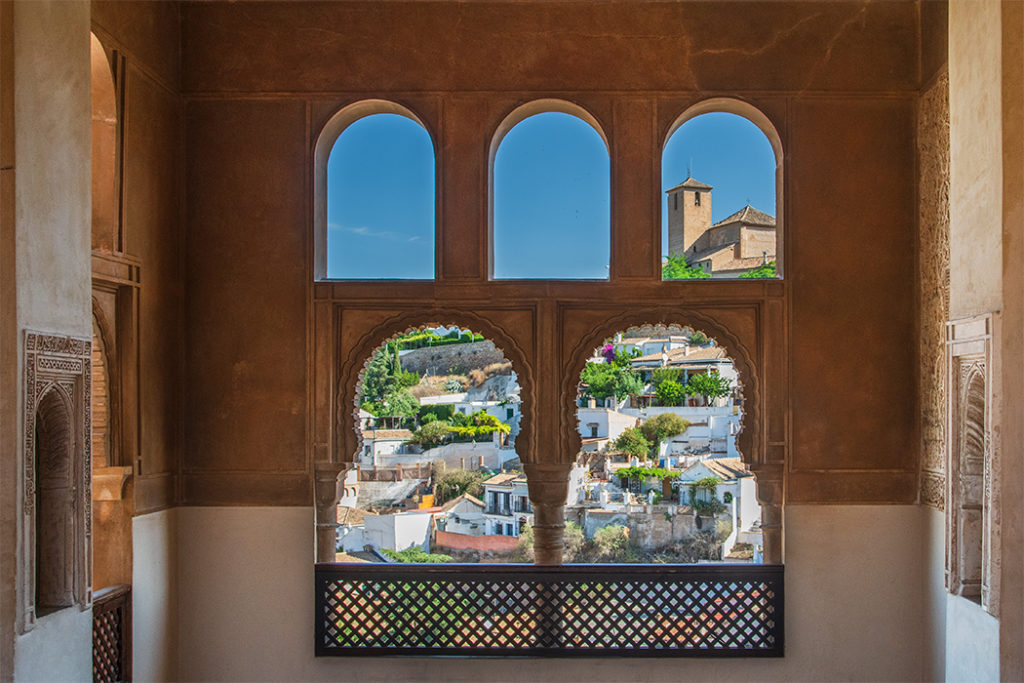
Like all Arabic palaces, it is built around a central courtyard with a pool. The prettiest rooms are located on the second floor and have gorgeous views over the Axarea quarter, the Zirid wall, and the Alhambra towering over the neighbourhood in the distance.
One curious thing about Palacio Dar al-Horra is the tiny little rooms that are too small to be bedrooms but possibly too large to be, say, storage areas.
Mirador de San Nicolas
Mirador de San Nicolas (Calle Espaldas a San Nicolas) is the best lookout for watching the setting sun cast the golden light over the Alhambra and the perfect place to finish the walking tour of Moorish Granada. From this lookout, you can see both the Nasrid Palaces and the Alcazar crowning the top of the hill with their walls glowing in different shades of gold and red.
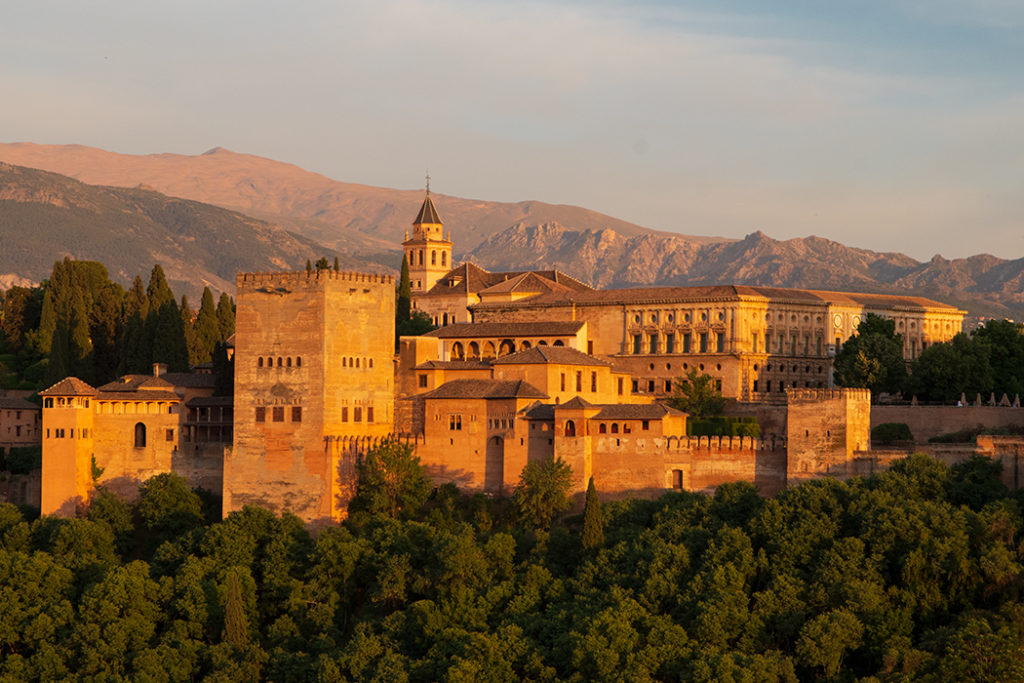
There are often street musicians entertaining the crowds with popular Spanish songs and the whole experience has a fiesta atmosphere to it.
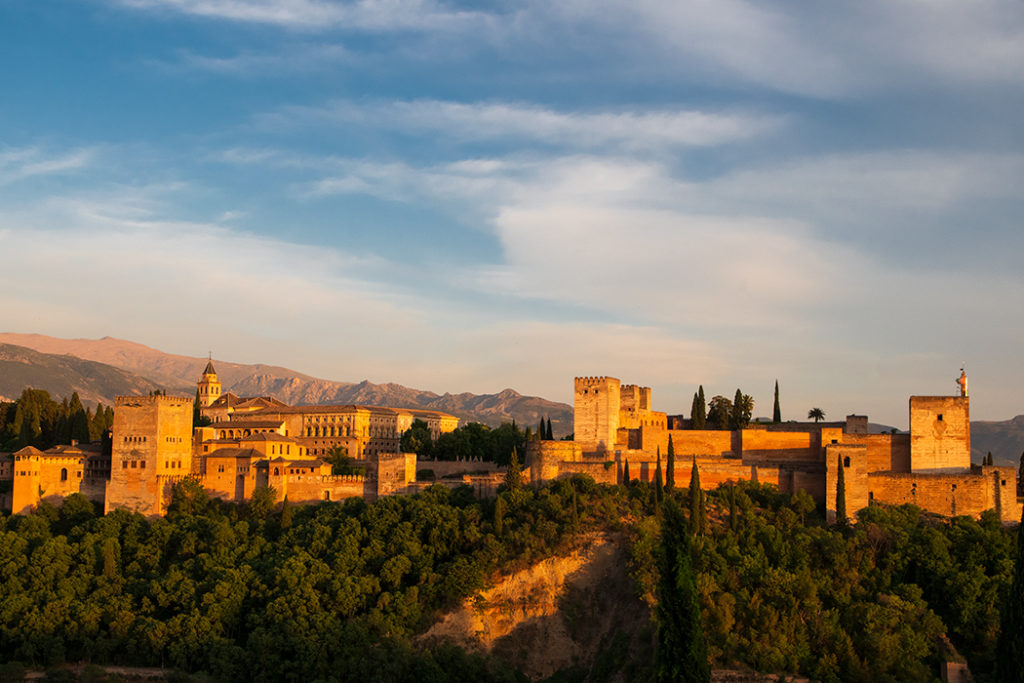
As with all popular attractions in Granada, it’s best to arrive early to claim your spot along the very busy plaza wall. The plaza fills up as early as an hour before sunset. Alternatively, if you wish to watch the sunset in the comfort of your own chair with a glass of chilled wine in hand…
Dinner with a view at El Balcon de San Nicolas
Located right underneath the San Nicolas lookout, El Balcon de San Nicolas (C. Atarazana Vieja, 4) has superb views of Alhambra from its extensive balcony. The food is on the expensive side, but it’s to be expected, given the location.
You will find all the traditional options on the menu, including paella, gazpacho, garlic prawns, steak, and grilled octopus, as well as a choice of desserts and some delicious wines. The atmosphere at El Balcon is quite elegant and relaxed, and the staff are very friendly.
Hammam Andalus
To complete your Moorish Granada experience and to reward your muscles for all the walking, treat yourself to a relaxing hour at Hammam Andalus. You can catch bus 32 from San Nicolas lookout back to Carrera del Darro, and the Hammam is just one block away.
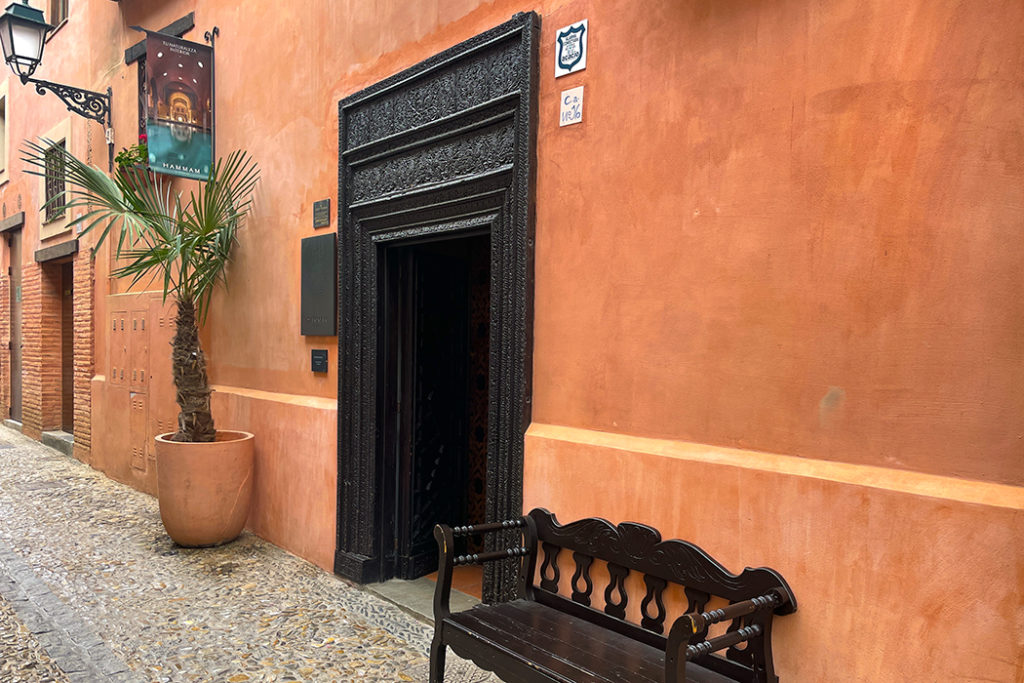
It’s a gorgeous space with earth-coloured walls, dim lighting, soft Arabic music and heavenly scents. The bath experience is 39 euros, and you have an hour to soak in different pools and spend some time in the steam room.
The right way to do it is to start in the warm pool to acclimatize, then wade into the hot pool, which is just like bathing in a hot spring, then grit your teeth and dip yourself into the cold pool before heading into the steam room. And repeat. In the end, you’ll be so relaxed that you’ll drift off to sleep as soon as your head hits the pillow.
Or, for some extra indulgence, add a massage or the traditional hot stones experience to your bathing. There are plenty of different options available.
And there you have it. The best way to explore Moorish Granada in one Day. Hope you enjoy your journey through Arabic Spain as much as I did.
More on Exploring Spain
- 15 Stunning Waterfalls in Spain to Add to Your Bucket List
- Alicante Old Town – The Charming Barrio Santa Cruz
- Watching Iberian lynx in Sierra de Andujar Natural Park, Spain
- 8 Amazing Things to Do in Segovia on a Day Trip from Madrid
- Discover Madrid Old Town: From the Moors to the Austrians
- Malaga Old Town: Where Romans, Moors and Picasso Meet
- 5 Gorgeous Hotels in Granada to Consider for your Next Trip
- Discover Moorish Granada in One Day on This Self-Guided Walk
- Sacromonte Caves: The Best-Kept Secret in Granada
- 17 Fabulous Weekend Breaks in Spain: Must-See Destinations and Hidden Gems

